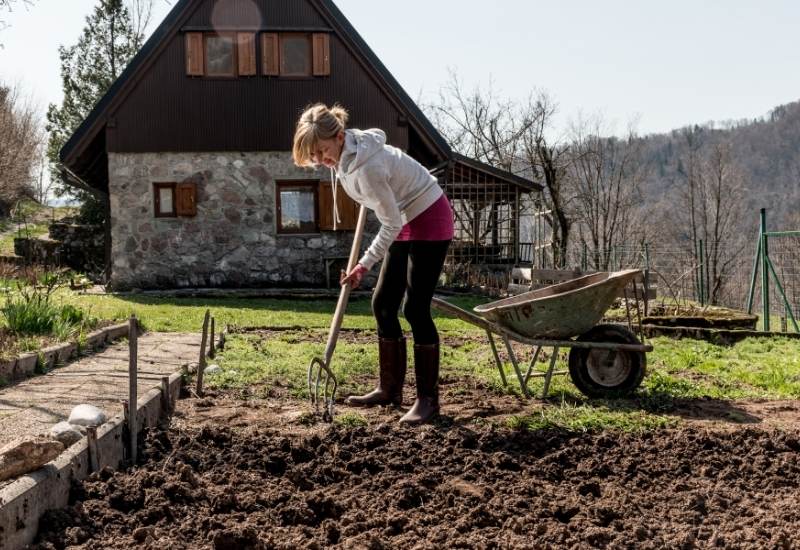
Many experienced growers and farmers can confirm that the most important thing to grow in a garden is your soil. If you grow good soil, everything you plant in it will be set up for success and produce fruits and vegetables that are higher in nutrients than those grown in poor soil.
Unfortunately, due to historically unsustainable land management, many of our backyards do not have good soil, and it might be eroded, dry, or heavily compacted.
But don’t worry, this article will help you restore your soil into the rich, productive, chocolate-fudge-brownie-looking earth it should be with our best advice on how to improve your garden Soil fertility.
Why is it Important to Improve Soil?
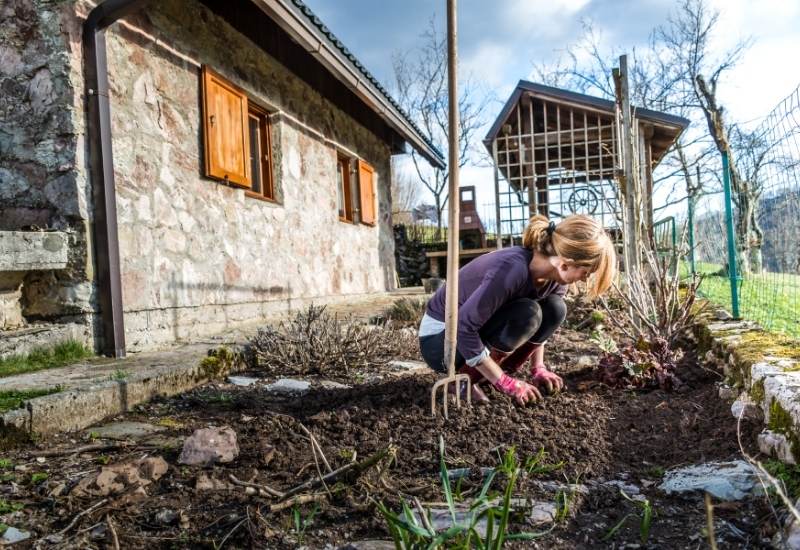
Globally, our food system is completely dependent on healthy soil, and this is also true for the edible or ornamental plants in your garden.
Topsoil is the most productive layer of a soil system, but it’s only a few inches of nutritious goodness that can be easily washed away or destroyed with the wrong practices.
Without healthy soil, we can’t grow healthy food, as the nutrients in food are directly sourced from the nutrients in soil.
Although it is certainly possible to grow many fruits and vegetables in sub-par soil, on a chemical level whatever you harvest from those plants will have fewer nutrients and be less flavorful than crops grown in rich soil.
Since we cant see these biological processes with the naked eye it’s hard to believe it’s true, but there is more agricultural science coming out everyday about how essential healthy soils are.
When soil is degraded it becomes harder and harder to grow food in it, which affects the longevity of your garden.
As a gardener, building and maintaining healthy soil is a completely crucial part of the growing process, and if you really want to see your garden come thrive it’s important to invest some time into improving it.
10 Practical ways to improve your soil system
Here is our best advice, divided into 10 tips and steps, for creating amazing soil. It doesn’t matter what kind of soil you are starting out with, even if it’s already compacted and eroded or if it’s just okay, these actions will improve and revitalize it over time.
1. Amend your soil with compost or manure every season
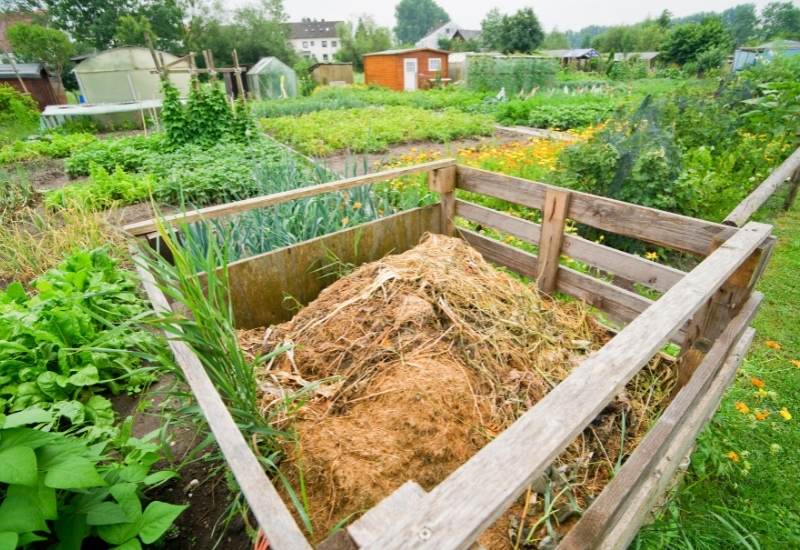
Soil needs feeding just like plants do, and the best diet to feed them is composted manure and organic matter, which is just about as nutrient-rich as it gets.
Decomposed manure and food scraps contain fungi, bacteria, and insects that will continue to build and break down essential soil components, and also bring an influx of fresh nutrients to the mix.
What’s more, compost and manure improve drainage in soil systems and keep the structure light and aerated.
The more you garden, the more you will appreciate how compost and manure are more valuable than gold to farmers- it’s just the best stuff!
Adding composted food scraps back into your soil also completes the cycle of growth by returning harvested crops to the earth to help new ones grow- and reduces unnecessary trash!
2. Rotate and intercrop your fruits and vegetables
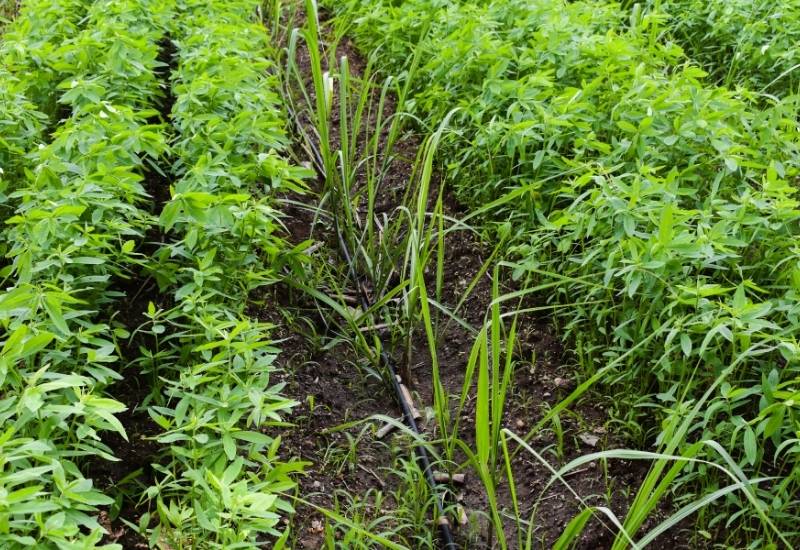
In your soil and garden ecosystem, and the best way to promote health within it is to plant lots of diverse plants in a polyculture and rotate them every season.
Diversity creates resilience in any ecosystem, by providing contingency plans and backup resources to fight off disease, pests, and extreme weather.
Soil pathogens can live in one bed for multiple years and if the same type of plant is consistently planted in the same spot then these species-specific pathogens will continue to spread and infect crops.
But if you switch up the types of crops that are planted in that spot from one year to the next, the disease pathogens won’t have their target plant to feed on and will die out.
Even better, many plants will actually improve the soil for the next group of plants that are planted there, like legumes which fix nitrogen.
If you plant lots of heavy nitrogen feeders, like tomatoes or cabbage, in a spot one year, you should plant nitrogen-replacers like peas the following year to replenish the nitrogen stores in the soil.
Many gardeners refer to the ‘three-year rule’ where plants from the same family should not return to a spot for at least three years from the initial planting, so that any species-specific soil pathogens have died out.
3. Throw away synthetic chemicals
Synthetic, glyphosate-based pesticides and fertilizers are bad news for soil. Designed to target and kill specific weeds and pests that hinder the growth of your crops, or give your plants an energy boost, many of these chemical pesticides have a whole sleuth of negative side-effects.
Although these inputs are initially effective, they often kill beneficial insects in the soil, leave toxic residues, and contaminate local water systems (which can poison wildlife!) when the rain washes them away.
The good news is that there are many organic or homegrown fertilizer options and environmentally-friendly techniques through integrated pest management that can provide you with effective solutions without having to compromise soil and environmental health.
For example, for crops prone to pest infestations of fungal infections, you can try companion planting with garlic or certain herbs that emit a scent that deters insects.
For plants already infected with spider mites or aphids neem oil or garlic solutions can get rid of them without adding toxins to your soil.
4. Plant cover crops for the winter
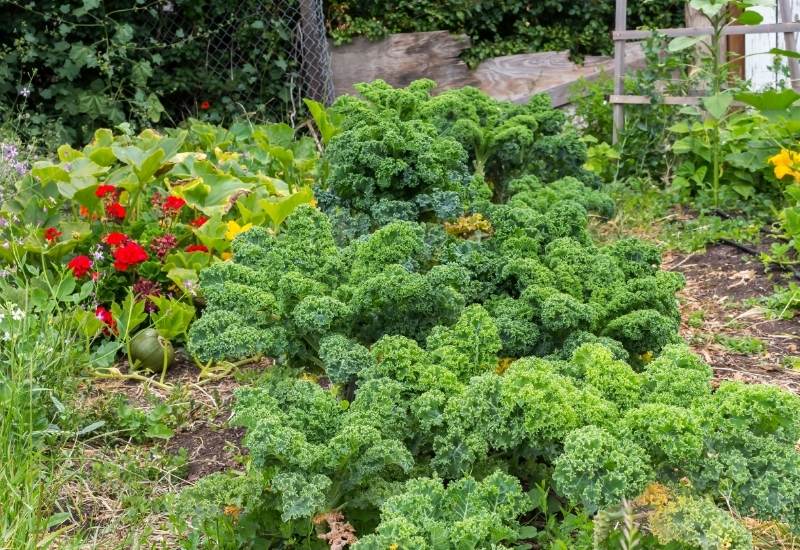
One of the worst things for soil is to be left bare and naked, especially when exposed to harsh weather conditions.
Soil erosion and degradation often occur in winter when there is nothing to protect the soil surface from being blown away or becoming an icy tundra.
The root systems of plants act as an anchor that holds together soil structure and prevents it from being washed or eroded away during rainstorms, or from being compacted in heavy snowfalls.
Popular cover crops include clover and ryegrass, and you can even choose edible ones for an early spring harvest like kale, radish, and turnip.
It’s a win-win situation, where in the spring edibles can be harvested and nonedibles can be turned into the soil or left on the surface and add extra organic matter to the topsoil. Plant cover crops at the end of the season before the first frost.
5. Apply a layer of mulch between crops
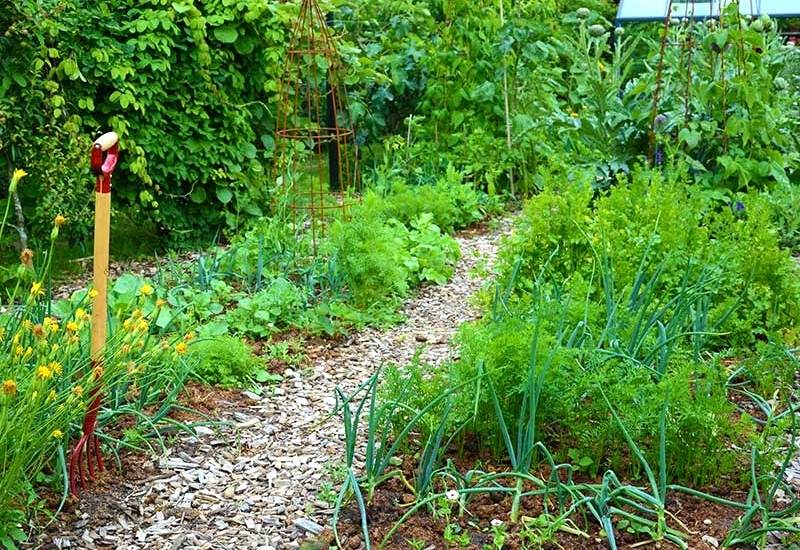
Mulch is the most effective way to cool the soil surface, improve moisture absorption, and prevent the growth of invasive weeds.
Patches of soil in the growing season won’t be magically free from growth (nature doesn’t leave empty spaces), so either you can break your back weeding constantly or you can add a layer of shredded wood chips, soiled straw, or good ol’ compost to cover the soil surface between your crops.
This helps your plants grow without having to compete with weeds, but also lessens the demands those weeds would place on your soil and, best of all, your mulch will biodegrade and act as yet another valuable, nutrient-rich addition to your soil system!
Note that your mulch should not touch the stems of your plants, as the moisture may cause rotting, and different mulches are better suited for different crops so do some research before applying.
If you like a challenge, a really interesting technique is to grow a ‘living mulch’. Something low-growing like clover can be planted between your crops to protect the soil and prevent weed growth, and it will also fix nitrogen in the soil! Just make sure to plant it with something that has opposite feeding needs, so there is limited competition.
6. Walk on the paths, not the beds!
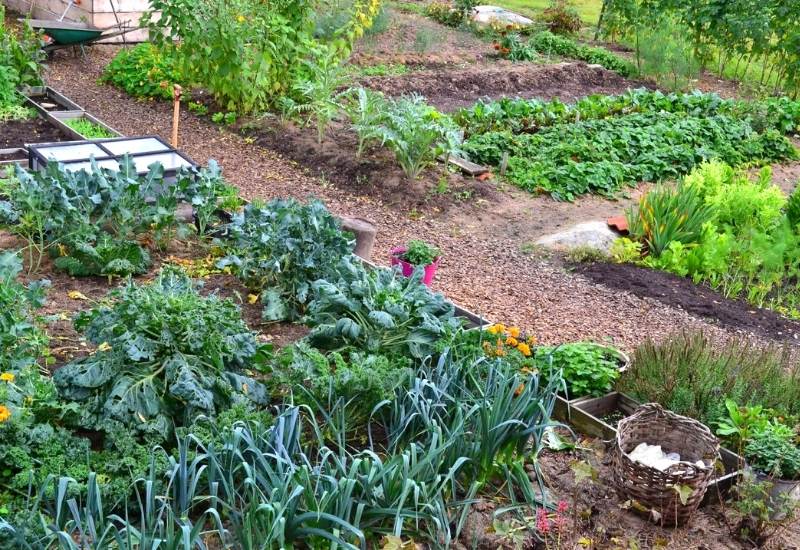
Soil compaction is a common reason for suboptimal soil, as many people don’t realize the damage that can be done by repeatedly walking around on unplanted garden beds.
Make sure your garden has clearly delineated paths and beds and always walk in the paths to prevent the soil you are planting in from becoming hard and concrete-like over time.
Repeated compaction creates soil that is really dense and has little space for air and water to move through it. If you imagine a sponge that’s been completely flattened, all the water will have left it right?
And it probably won’t be able to soak up much water until it’s able to bounce back into its original shape. The same is true for soil, which should be aerated and loose enough so that water and the roots of plants can penetrate downwards without resistance.
7. Test and amend your soil With Seaweed
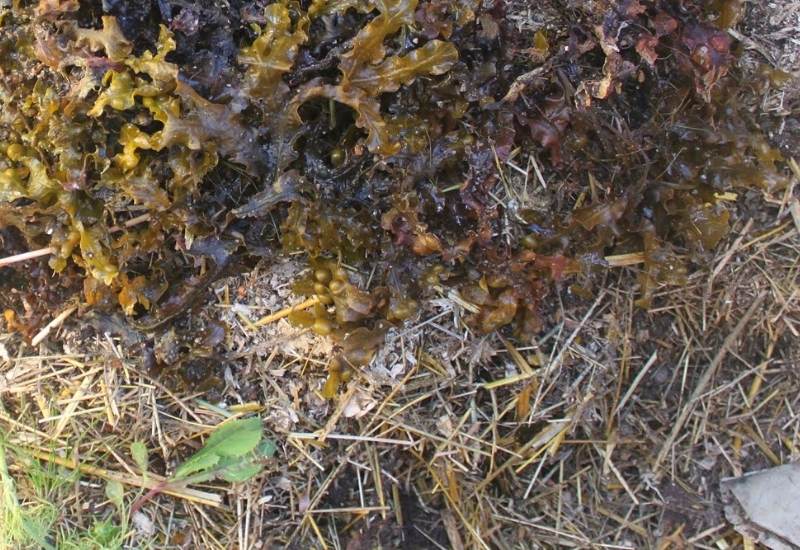
Take soil tests in the fall to detect any missing nutrients. This is especially important for gardening on a new piece of land, since you don’t know what has been done or added to the soil in the past. Take multiple tests at different locations around your garden, and then add the appropriate amendment for what’s missing!
For example, areas lacking in nitrogen can be amended with seaweed or kelp-based organic fertilizers, or nitrogen-fixing legumes can be planted there to add this key nutrient back into the soil.
Knowing the soil pH of different beds is also valuable in mapping out what crops go where, and soils that are too acidic can be amended with cooled ash from a wood-burning fireplace to make it more alkaline.
Soil testing kits can be bought online for as cheap as 20 USD, but the more you spend the more detailed results you will receive. You can also send your results into local university labs for agricultural scientists to analyze and identify microorganisms and provide their feedback.
This is especially good to do if you are having a lot of health problems with your crops, as you might have soil-borne pathogens that are hard to detect without the correct equipment.
8. Grow perennials and use them as amendments
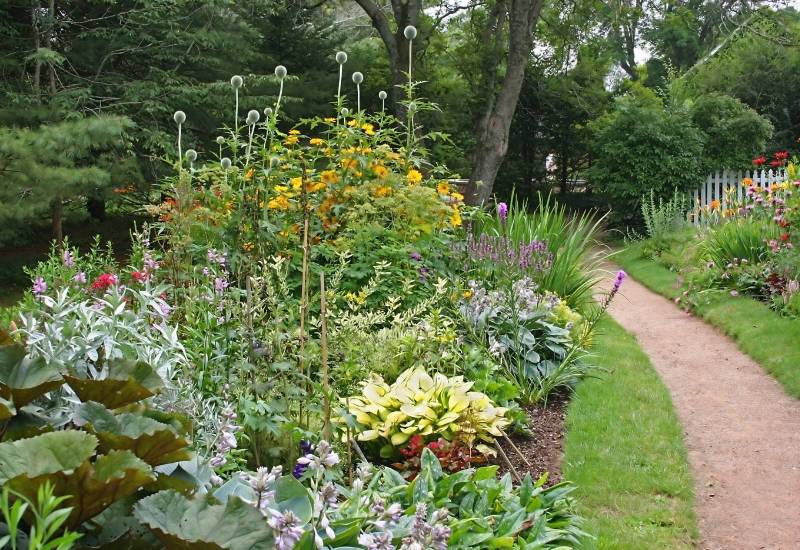
Annual crops should be rotated, but perennials should be allowed to establish themselves at the edges of beds or spotted around the garden for a few years.
Perennials are great for gardeners, as they are typically little work, but also great for the soil as they allow that patch to rest and remain undisturbed for several years.
The end-of-season cuttings and pruned branches and foliage also make a great addition to your compost, or can be shredded and used as a mulch.
Mixing together shrubs, trees, and crops and then letting fallen leaves and pruned branches cover the soil actually simulates how a natural ecosystem would self-regulate, and creates a balanced cycle of growth and decay.
9. Try out ‘No Dig’/ ‘No Till’ Gardening techniques
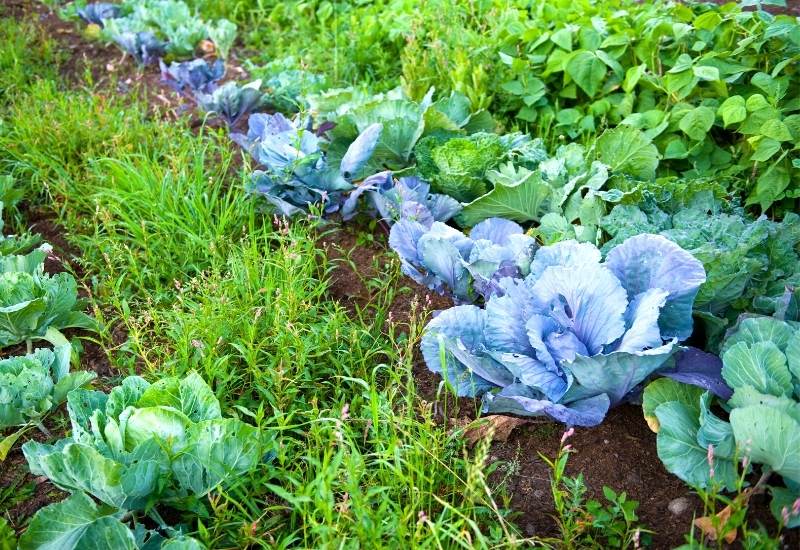
A bit of a controversial subject, tilling is essentially the process of churning up of the top layer of soil to prepare it for planting. In the spring in rural areas you may have seen tractors with rototillers attached plowing the fields to prepare for planting.
Although it is a historic technique, a lot of agricultural scientists are discovering that it can be harmful to soil, for many of the reasons discussed above like topsoil damage.
There are many microorganisms and fungi networks that make soil a diverse and resilient ecosystem, and tilling chops them up and leaves them on the surface of the soil where they get fried by the sun.
Many gardeners are switching to no-till systems where other techniques are used to prepare beds. For instance, sheet mulching is where you lay black landscaping fabric over winter weeds in the spring to let the sun bake them, after which you can pour a layer of compost over the top before planting.
This maintains the soil structure and amends it with fresh nutrients for the growing season, but is difficult to do on a large scale.
10. Introduce worms and beneficial fungi to your soil
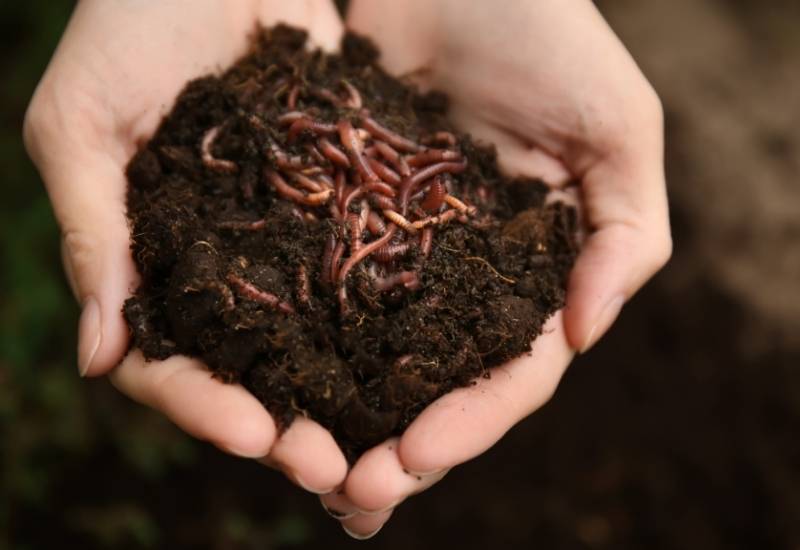
Building a vermicompost that includes worm castings will create a compost that has lots of earthworms and other beneficial insects that can then be added to your garden soil and increase aeration. Worm feces are also highly nutritious for the soil and plants.
The benefits of mycorrhizal fungal networks are also being increasingly understood as important in growing healthy soil.
You can inoculate your soil with beneficial, native fungal spores that will create underground mycorrhizal networks, which facilitates nutrient exchanges between plants, transports water, and improves the soil structure.
Soil Grows Over Time
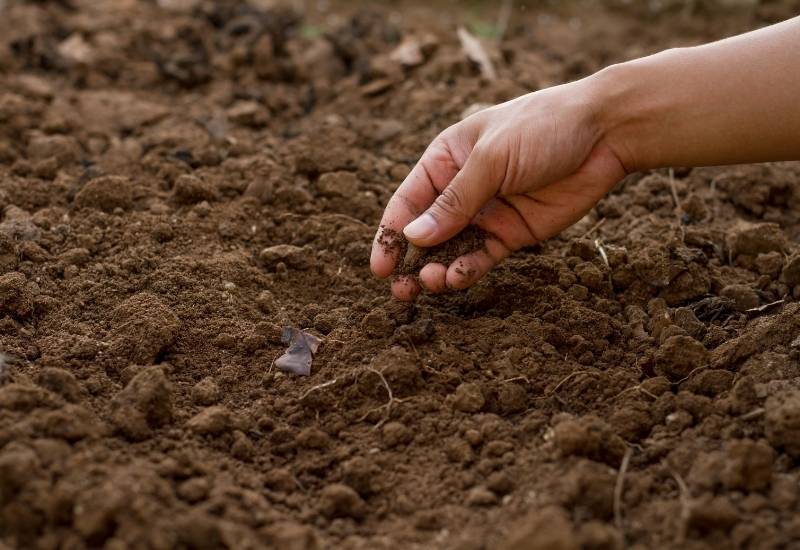
Building and improving your soil is an ongoing process that will slowly reveal its benefits over time. If you are someone who has been using chemical fertilizers and pesticides in the past, you might be used to quick results and will need to adjust your expectations to be focused on the longview of your garden.
Building soil in our gardens creates sustainable and resilient systems that will be capable of producing nutritious food for decades, and it’s one of the most responsible things you can do!

Written By
Maya
Maya is a freelance content writer and avid gardener currently based in Sweden. She gained her BA in Environment and Geography in Canada, which is also where she first learnt about the detriments of the industrialized agricultural system. During the summer she began farming through the WWOOF program, and over the next six years has continued to grow and learn at a number of organic farms and gardens across the US and Canada. She is passionate about the role of regenerative agriculture in wildlife conservation and climate change mitigation, and thinks growing your own food is a key part of revolutionizing the system. In her free time she likes to read, garden, and pet nice dogs.
